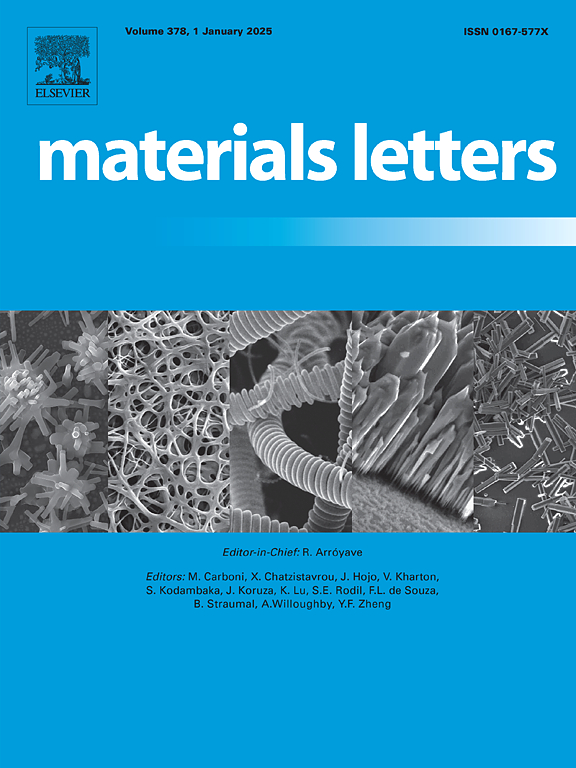Banana fiber with madar fiber composites for sustainable printed circuit boards
IF 2.7
4区 材料科学
Q3 MATERIALS SCIENCE, MULTIDISCIPLINARY
引用次数: 0
Abstract
This research explores plantain banana and madar fiber composites (BMFC) as sustainable alternatives to plastic-based printed circuit boards (PCBs). The study combines banana fibers (40 %), madar fibers (20 %), and epoxy resin (40 %) to create eco-friendly PCBs using materials abundant in Tamil Nadu, India. Testing revealed promising mechanical and electrical properties: tensile strength (22.64 MPa), flexural strength (34.56 MPa), impact resistance (3.12 KJ/m2), peel strength (4.68 N/mm), water absorption (3.54 %), dielectric constant (3.6 at 25 °C), temperature stability (±1.7 %), and signal integrity (−3.2 dB). Results indicate BMFC’s potential as a viable, sustainable alternative to conventional PCBs.
用于可持续印刷电路板的香蕉纤维与马达纤维复合材料
本研究探讨了芭蕉和马达纤维复合材料(BMFC)作为塑料基印刷电路板(PCB)的可持续替代品。该研究将香蕉纤维(40%)、马达纤维(20%)和环氧树脂(40%)结合在一起,利用印度泰米尔纳德邦丰富的材料制造生态友好型印刷电路板。测试表明,该产品具有良好的机械和电气性能:抗拉强度(22.64 兆帕)、抗弯强度(34.56 兆帕)、抗冲击性(3.12 KJ/m2)、剥离强度(4.68 牛/毫米)、吸水性(3.54%)、介电常数(25 °C 时为 3.6)、温度稳定性(±1.7%)和信号完整性(-3.2 分贝)。结果表明,BMFC 有潜力成为传统印刷电路板的可行、可持续的替代品。
本文章由计算机程序翻译,如有差异,请以英文原文为准。
求助全文
约1分钟内获得全文
求助全文
来源期刊

Materials Letters
工程技术-材料科学:综合
CiteScore
5.60
自引率
3.30%
发文量
1948
审稿时长
50 days
期刊介绍:
Materials Letters has an open access mirror journal Materials Letters: X, sharing the same aims and scope, editorial team, submission system and rigorous peer review.
Materials Letters is dedicated to publishing novel, cutting edge reports of broad interest to the materials community. The journal provides a forum for materials scientists and engineers, physicists, and chemists to rapidly communicate on the most important topics in the field of materials.
Contributions include, but are not limited to, a variety of topics such as:
• Materials - Metals and alloys, amorphous solids, ceramics, composites, polymers, semiconductors
• Applications - Structural, opto-electronic, magnetic, medical, MEMS, sensors, smart
• Characterization - Analytical, microscopy, scanning probes, nanoscopic, optical, electrical, magnetic, acoustic, spectroscopic, diffraction
• Novel Materials - Micro and nanostructures (nanowires, nanotubes, nanoparticles), nanocomposites, thin films, superlattices, quantum dots.
• Processing - Crystal growth, thin film processing, sol-gel processing, mechanical processing, assembly, nanocrystalline processing.
• Properties - Mechanical, magnetic, optical, electrical, ferroelectric, thermal, interfacial, transport, thermodynamic
• Synthesis - Quenching, solid state, solidification, solution synthesis, vapor deposition, high pressure, explosive
 求助内容:
求助内容: 应助结果提醒方式:
应助结果提醒方式:


